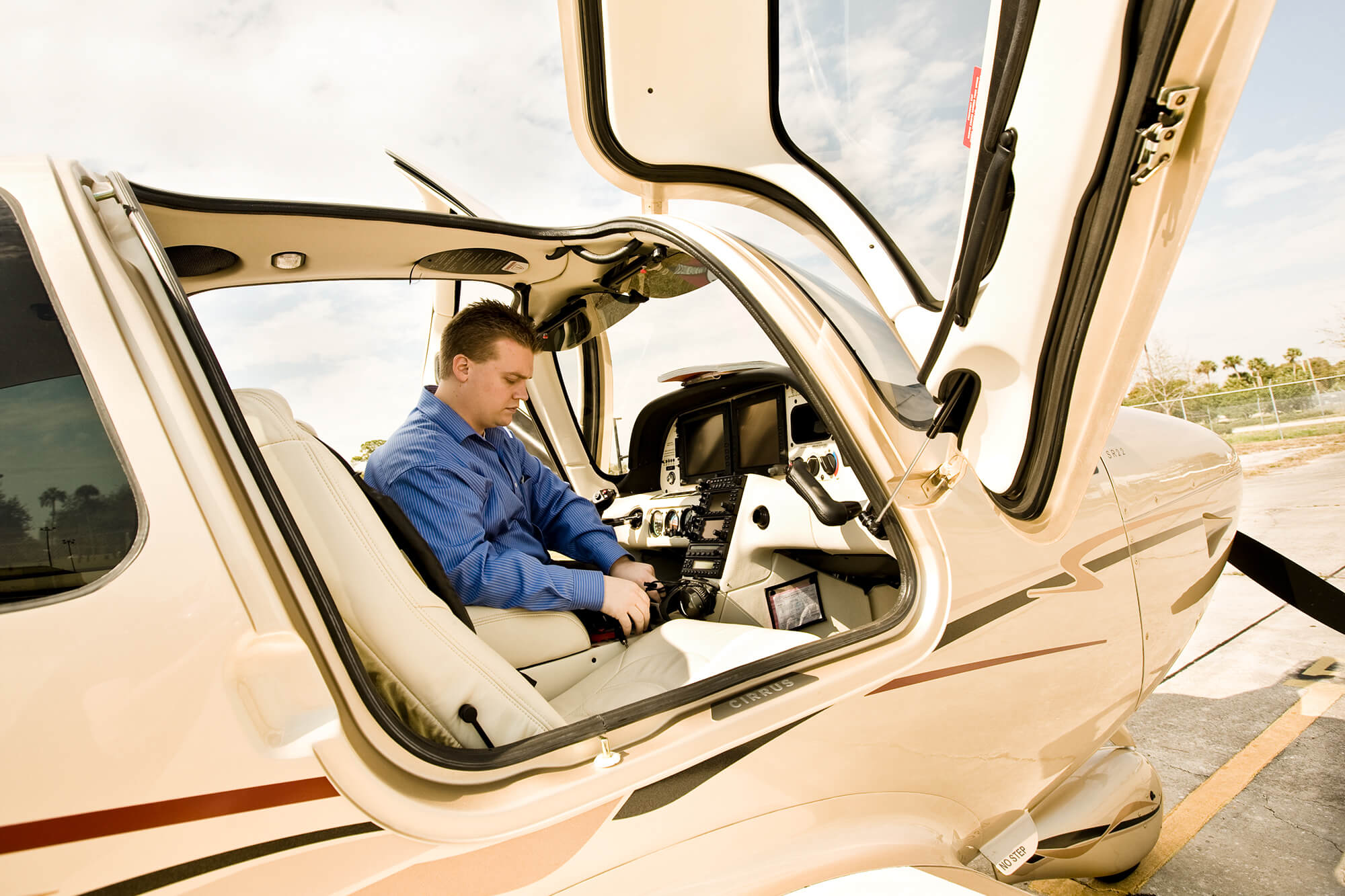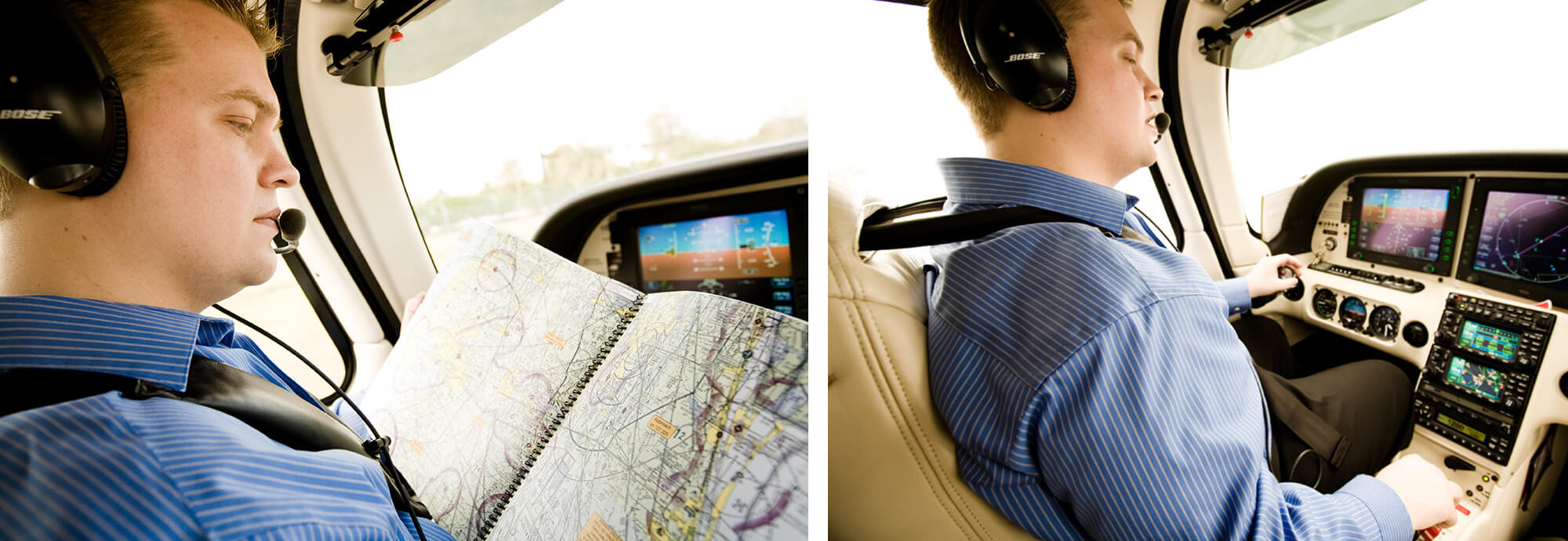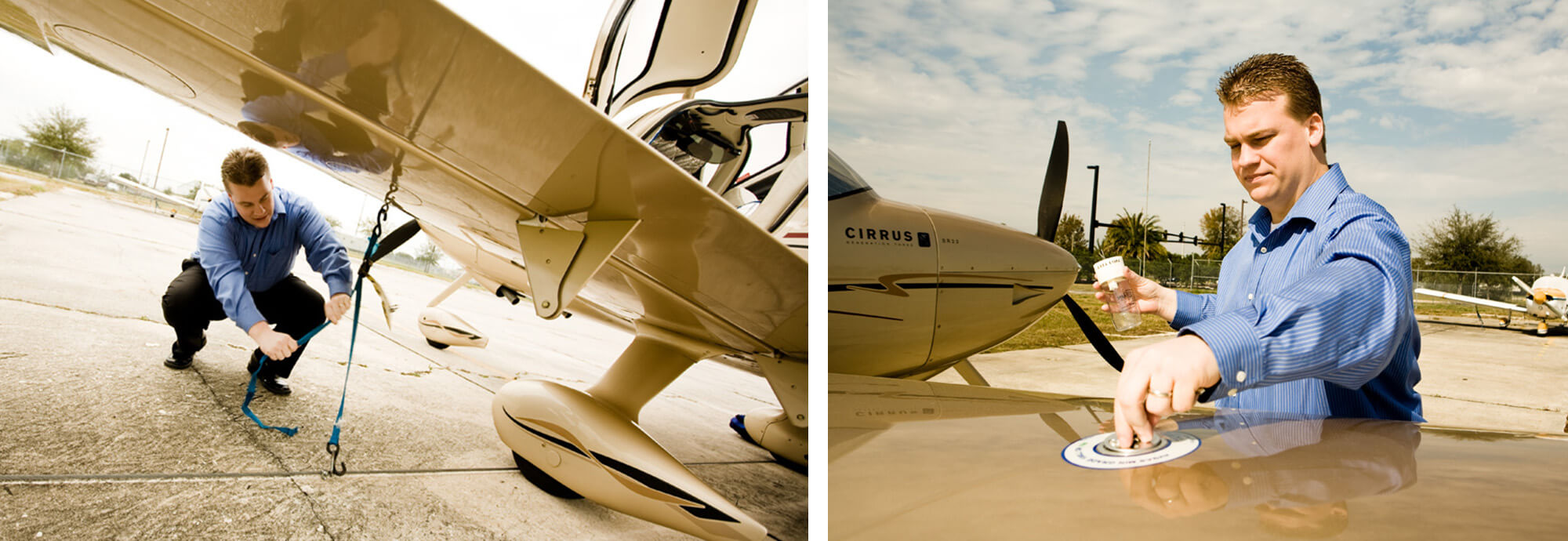
Airplane Keeps This NBAA Member Wired to Customers
March 1, 2008

For Bryan Currier – the 28-year-old president of Advantage Technologies, Inc., a Troy, Michigan-based medical information technology (IT) consulting firm – mobility means everything.
That’s because Currier must be able to visit, often on short notice, the host of small and medium-size health care practitioners who are scattered across the Upper Midwest and rely on his computer support services to keep their IT systems running smoothly.
Because of the premium he places on getting a first-hand look at his clients’ computer networks, Currier knows from experience that driving or taking airline flights is often inefficient for getting to a site. On business trips, Currier and his computer technicians often used to take long car rides or airline flights through hubs, which he said was “totally impractical,” not just because of the extensive travel time involved, but because, on more than one occasion, commercial carriers had damaged his technicians’ containers of specialized tools.
“What I began to realize was that there had to be a better way,” said Currier. He decided to learn how to fly, and after winning his wings, began to utilize light general aviation (GA) airplanes to maximize his travel efficiency. “It was one of the best business decisions I have ever made,” he declared.
“Flying a general aviation aircraft is a key advantage for us,” said Currier. “In an era of technology, when advertising suggests, ‘Why travel when you can do a web meeting?’ a lot of people are losing the value of a face-to-face meeting with a client or potential client. You can’t do what we do from the Internet. The efficiency of being able to get to customers and meet with them on their time is absolutely critical.”

Making a College Concept a Reality
Just like FedEx founder Frederick W. Smith, who conceived his overnight delivery service while still in college, Currier developed the concept of a medical IT consulting firm prior to graduating from college in 2002. In the eight years since Advantage Technologies, Inc. was founded, the business has grown approximately 20 percent annually. Today, the privately owned company has 18 employees, provides back-office technologies to clients throughout the Great Lakes region and generates revenues of nearly $3 million per year.
“There is a big drive in modern health care to go digital,” explained Currier. “In order to be able to do that, doctors and dentists need an entire technology infrastructure – computers and networking. We not only install their computers, we are trained and certified by various manufacturers of these digital medical devices. The digital companies sell doctors and dentists the equipment.
We take it out of the box and actually make it work in medical practices.”
What makes Advantage Technologies work for its medical clients is the consulting firm’s ability to respond rapidly to technology support needs, thanks in part to the various single- and twin-engine GA airplanes (most recently a Cirrus) that the company has used over the years to meet its on-demand travel requirements.
“The Cirrus is a very fast and efficient aircraft,” said Currier. “With today’s fuel prices and all of the costs associated with aviation, small business people like me who rely on general aviation are very sensitive to any type of price increase.
It directly affects our bottom line. The Cirrus is one of the most efficient aircraft on the market. For that reason, it was an excellent match for us.”
In fact, the Cirrus has enabled Advantage Technologies’ computer technicians to travel to client sites on a moment’s notice. For example, recently when an Indianapolis pediatric dentist, who was scheduled to operate on a patient the next morning, called in a panic at 6 p.m. the night before the surgery because his high-tech imaging system was not functioning properly, Currier responded by immediately calling two of his technicians and promised the physician that they would be on-site in about an hour and a half to trouble-shoot his equipment. Jumping into a waiting rental car when they arrived in Indianapolis, the Advantage Technologies team was able to have the medical imaging system up and running in two hours.
Even in more typical missions, Advantage Technologies’ airplane serves the company well. “I live 35 minutes north of Ann Arbor in Linden, MI,” explained Currier. “The closest major airport is Detroit Metro. I would need to leave my house two and a half hours before a scheduled departure to get an airline flight at Detroit. On the other hand, if I am traveling alone, I can be at my airplane [which is based at Price’s Airport in Linden] in five minutes.”
On one recent trip, Currier flew from Linden to DuPage, IL, just west of Chicago, to meet with a potential customer. While in DuPage, an existing customer called Currier from Oconomowoc, WI, a suburb of Milwaukee. After he finished his business in DuPage, Currier flew to Oconomowoc.
But even before he left for Wisconsin, another potential customer called and asked him if he could come to Stevens Point, WI at the end of the day. Because he was flying his own general aviation airplane, Currier was able to accommodate his existing customer, as well as two new potential clients, and was still able to make it home that same night.

Business Aviation Advantages Within the Reach of Many
Some people unfamiliar with the advantages of business aviation might say they cannot afford to own and operate their own airplane. Currier maintains, “If you just look at ticket prices…it can be cheaper to take an airline. But if you look at actual time invested, that trip I made [to Illinois and Wisconsin] most likely would have taken three days by airline, and I would have lost two days of productivity, spent two additional nights away from my family and incurred two additional days of expenses on the road. When you add up those costs, there is a very compelling financial reason for using business aviation.”
Although it is difficult to place a dollar figure on the value of providing superior customer service, Currier says his airplane helps him regularly visit existing customers to make sure they are happy with their computer installations. It also gives him opportunities to discuss whether the time has come for a client to upgrade from an existing IT support network to the next generation of technology.
“I will routinely go and spend two days and hit 10 customers in four cities using the airplane,” said Currier.
“That has really helped us because, being located in the Midwest, not everything is 40 miles down the highway. The small airplane has made all the difference in being able to routinely reach and stay in contact with these customers.”
Despite his busy schedule, Currier has invested the time necessary to ensure that he flies safely. He learned to fly in nearby Port Huron, MI, then went to Marine City, MI for instrument flight instruction and completed his multi-engine and commercial training in Phoenix, AZ, asking each of his instructors to customize his training for the kind of flying he was going to do. Last year, he completed a one-week Cirrus transition course.
Currier believes in doing more than what the piloting regulations require to stay sharp. “It takes a lot more flying to stay comfortable than it does to stay legal,” he said, “so this is the guideline that I use: If I am not comfortable, then it’s time for recurrent training, even though I might be months away from not being legally current.”
Speaking Out on Aviation Issues
Like most GA operators, Currier is concerned about the possible deleterious effect of aviation user fees for Federal Aviation Administration funding, which have been under consideration by Congress as part of the multi-year “reauthorization” for the agency. “This is a slippery slope,” he said. “In other countries, user fees have had an enormously negative impact on business aviation and other general aviation operators, so I am adamantly opposed to user fees of any sort. If there is a need to raise fuel taxes to support development of the next-gen air traffic control system,
I am fine with that. GA will pay its share. That’s not what this is about. It’s about totally changing the structure of the funding system and adding a completely unnecessary bureaucracy to a system that is otherwise very efficient.”
Currier says that imposition of user fees could affect his decision to fly more. He has been considering acquisition of a second aircraft to meet Advantage Technologies’ growing travel needs. “Ultimately, I would like to see
us get a turboprop. But in that case, a user fee would
[directly] affect us, and, as I said earlier, we are incredibly sensitive to cost increases.”
Currier appreciates how NBAA has been fighting to defeat user fees, but he also would like the Association to provide cost comparison tools that he could use to help decide which new aircraft to buy. In addition, he would like to see NBAA add to the resources the Association already provides to describe the various legal and tax ramifications and options of operating aircraft for business purposes.
As a person who recently decided to buy property at an airpark, Currier has been thinking a lot about the future of general aviation. “Five years ago I was pessimistic. Now, I am far more optimistic because GA has turned to technology to make flying more appealing and efficient. I think advanced technology is going to bring a new generation of people to GA.”


 International Business Aviation Council Ltd.
International Business Aviation Council Ltd.